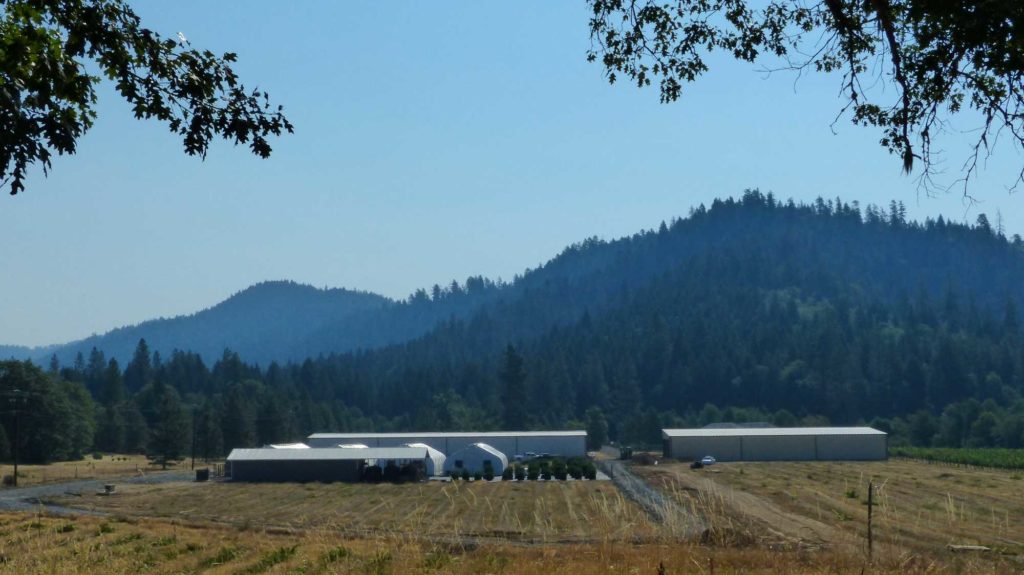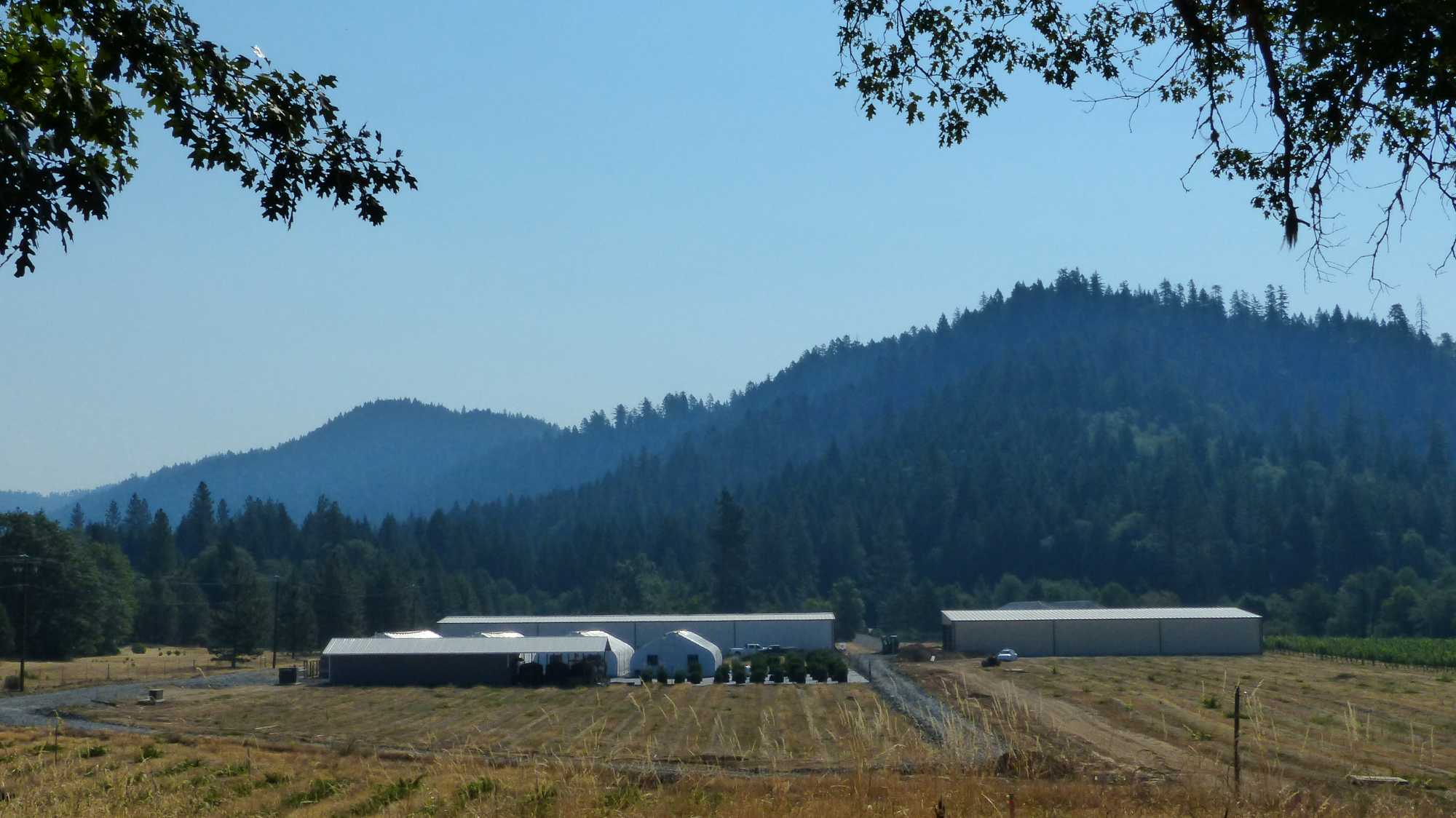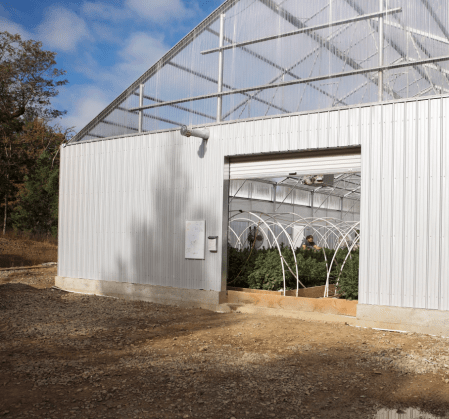Build A Commercial Greenhouse
For home gardeners, horticulturists, and planting enthusiasts, a greenhouse, is a space to relax and pursue their hobby. However, a greenhouse means much more than that to commercial growers.
Steel frames greenhouses, or grow-houses, are closed structures used to grow plants and vegetation for commercial or recreational purposes. Typically faced with glass or other transparent material, these steel buildings are detached from main buildings in most cases but can be attached if required.
The purpose of steel greenhouses is to provide conditions ideal for the growth of particular plant nurseries. This is achieved by controlling factors affecting plant growth, such as humidity and temperature within the perimeter of the greenhouse.
Commercial Greenhouse: Why You Need One
Commercial greenhouses are spaces used for the growth of plants on a large scale with the intent of trade. If you’re just stepping into this business, you’re probably aware of the debate between greenhouse and open-field farming. While the concept of growing plants in a controlled indoor space has been around for centuries, most commercial set-ups followed conventional open-field farming for crops throughout history.
However, open-field cultivation comes with a multitude of risks, as it depends on a number of unpredictable factors. These include rapid climate changes, pest infestations, erosion of soil, and more. Keeping track of these factors and making sure that the field is completely problem-free can be a challenging task. Even if you’re vigilantly monitoring your fields at all times, there are certain aspects of conventional farming that simply cannot be controlled.
Another reason why open-field cultivation is an unfavorable choice is that there isn’t much that can be done to improve yield and generate more profit. That’s why modern farmers and professional plant growers have switched to greenhouses. These greenhouses are designed to boost revenue by allowing plants to grow in an environment that’s adjusted for optimum yield.

Currently, there are more than 8,000 greenhouse vegetable farms in the United States. The U.S. Census of Agriculture report also indicates that the number of greenhouses in the country has drastically increased by an estimated 115% over the last seven years. They are also dominating the farming and horticulture landscape on a global scale, as the value of the worldwide commercial greenhouse market was expected to rise to $30 billion in 2023.
Some relate this rapid change in farming trends to global warming and climate change, due to which the arable land per capita has declined in the last few years. However, the core cause of this shift in farming trends is the power of customization and control that comes with greenhouses.
Choosing a greenhouse for commercial farming allows you to have more control over the development of your crops. You can manage irrigation, temperature, air humidity, and even adjust the amount of light your crops are exposed to, in order to transform your indoor space into an environment ideal for plant growth. Technological advancements have also enabled professionals to regulate the level of carbon dioxide within the structure, for peak photosynthesis.
Commercial Greenhouses: Cost Considerations
DISCLAIMER: Due to the drastic fluctuation in construction prices use the following information as a general guide, understanding that supply chain issues, material costs, and consumer demand can significantly impact construction costs.
Despite the vast number of benefits provided by greenhouses, most commercial farmers hesitate to take the leap from open-field cultivation to indoor controlled farming, mainly because the scale of investment required for commercial greenhouses.
As these structures offer more control over factors crucial for optimum growth, their installation, operation and maintenance cost is much higher than that of open-field farming. For those with limited capital, the costs presents a challenge.
That doesn’t necessarily mean you’ll need to strain your budget to shift your operations to a greenhouse. Not all greenhouses are expensive and there are some budget-friendly options that can be considered by firms with financial limitations.
Factors Affecting the Cost of Your Commercial Greenhouse
The cost of a commercial greenhouse is determined on the basis of a number of factors, all of which can be adjusted according to your needs. Before you can do that, you’ll need to conduct thorough research on each of these factors, to ensure you end up paying for a model that fulfills all of your requirements and also lies well within your budget.
Required Area
The required area of your greenhouse primarily depends on the amount of yield you desire from your project. Most individuals or firms planting for commercial purposes prefer having a higher output. However, as greenhouses that cover more area require more materials, they tend to cost more. So if you’re low on capital, choosing the largest available greenhouse may not be the most feasible option.
In terms of area, commercial greenhouses can be broken down into the following types:
Small Scale 6×8 Units
Small scale 6×8 greenhouses are essentially tents or canopies, constructed with transparent fabric and plastic. These compact units are mostly used by hobbyists for gardening and aren’t exactly suitable for professionals, as congestion does not allow them to incorporate additional features and amenities required for successful commercial cultivation.
Mid-Scale 12×12 Units
Mid-scale 12×12 units are perfect for experienced farmers who know how to maximize space for optimum yield. Unlike 6x8s, these units have walls made of glass or polycarbonate along with a sturdy foundation laid by grading the floor and running electrical and plumbing lines.
Large-Scale Units
Greenhouses covering more than 50 feet of land are considered to be large-scale units. Most modern large-scale units are equipped with a number of amenities, such as an automated watering system, humidifiers, pest sprays, built-in drainage systems, and more.
Construction Materials
When on a tight budget, most individuals try to cut corners by compromising on the type and quality of greenhouse construction material, as it’s often believed that these materials don’t play a vital role in the development of crops. However, nothing could be further from the truth!
The materials used in the construction of your commercial greenhouse are key elements that determine the lifespan of your structure and its maintenance costs. The quality of your crops is also affected by the construction materials you choose, especially those used for the walls and the roof of the greenhouse.
Here’s a breakdown of different construction materials listed with their pros and cons and average costs, to help you decide which one suits your functional and financial needs.
Polyethylene
Polyethylene is typically used in small-scale structures. This is usually one of the most cost-effective construction materials out there. The flexibility of the film makes it easy to install. Maintenance of the film, on the other hand, is somewhat arduous.
The plastic needs to be hosed down every now and then and inspected regularly for punctures. If a puncture is found, it can be fixed with the help of a patch and packing tape. In the case where the film is torn or punctured from multiple points, you’ll need to replace it with a new one.
Glass
As plants use heat as fuel for photosynthesis, materials with high heat conductivity, such as glass, are ideal for the construction of greenhouses and garden centers. When sunlight strikes the surface of the glass, solar energy is converted into infrared energy, which then increases the temperature inside the structure and allows plants to thrive. The only downside of using glass is that it’s unable to withstand extreme weather conditions and can crack or chip under immense pressure, allowing the accumulated heat to escape, and destabilizing the internal environment.
Polycarbonate
Polycarbonate is plastic by nature. However, it’s far superior to your average polyethylene films and glass, especially in terms of strength and durability. The material is clear like glass but provides better insulation and is at least 250 times more impact-resistant than safety glass.
Capable of withstanding extreme heat, strong winds, or any other unusual environmental change, polycarbonate is undoubtedly a great alternative to glass.
Framing
The frame of a greenhouse is essentially its backbone, as it supports the entire structure. If the selected material is incapable of withstanding harsh conditions, your greenhouse may unexpectedly collapse. This could place your staff at risk of accidents and injuries and can increase the possibility of monetary loss as well.
Wood
Wood is typically the cheapest and most readily available framing material. It’s widely used in residential greenhouses due to its aesthetic appeal. However, not all types of wood are suitable for commercial greenhouse projects.
High levels of moisture within the greenhouse negatively affect the integrity of a wooden frame, rotting it from within. Wood is also more prone to pest infestations, which are not only highly inconvenient but also have the potential to damage your produce and waste valuable resources.
So wood, despite being cost-effective and relatively easier to size and assemble, may not be the most appropriate choice of framing material.
PVC Plastic Pipes
PVC is yet another material used by greenhouse builders that’s economical, lightweight, and easy to handle. It may not be as sturdy as metal frames, but it is certainly more resistant to corrosion than wood and can last for up to 20 years with UV protection.
Steel
Greenhouses with steel frames should be the go-to choice of those who prioritize durability and sturdiness. These frames are highly robust, low-maintenance, and capable of lasting through adverse conditions.
Environmental Control
Every crop needs a very specific environment in order to thrive. Artificial generation of these conditions is possible within greenhouses, but the level of environmental control offered by each type of greenhouse varies. The extent of control also plays a crucial role in the determination of the greenhouse’s overall cost.
HVAC Systems
HVAC systems allow you to control the level of heat and air within the greenhouse and modify the conditions to your liking. They can either be installed as a single unit or you can break down your heating, ventilation, and air-conditioning system into three separate components.
An HVAC system capable of maintaining internal temperature and humidity levels varies in price, depending on its features and performance.
If you choose against an HVAC, you can consider boilers for the provision of heat. These boilers can be fueled by natural gas, but can also be powered by electricity, depending on the flexibility of your budget. The furnaces also need to be cleaned annually, which adds to the maintenance costs. To keep the expenses to a minimum, compare the unit costs of fuel choices and the dependability of the fuel source before selecting a heating system for your commercial greenhouse.
For cooling and ventilation, consider adding small Horizontal Air Flow (HAF) fans. The fans vary in price and can efficiently eliminate hotspots in your greenhouse if positioned at suitable locations.
Lighting
Much like open-field crops, plant nurseries in greenhouses use the sun as the source of heat and energy. However, daily weather conditions aren’t always favorable for plant growth. On hazy or cloudy days, it can be difficult for your produce to acquire the amount of light they need to thrive. That’s why your greenhouse will need grow lights.
Grow lights can vary in price. The cost of each light relies on the electrical power it consumes and the output it’s capable of generating. Some types of lights also require specialized fixtures and ballasts, which can add to their installation costs.
Thermostats And Sensors
Thermostats and sensors are used to monitor (and in some cases control) environmental conditions within the greenhouse. Mechanical thermostats are cheap, but incapable of providing accurate results, which is why they’ve been rendered obsolete.
Electronic thermostats are now widely used in most commercial greenhouses. Not only do they allow growers to keep a check on the parameters of the internal atmosphere, but they can also be integrated with heating and cooling systems to keep the internal temperature at pre-set levels. Some electronic thermostats are also equipped with light sensors, which allow them to distinguish between day and night, and make modifications accordingly.
An electronic thermostat varies in price, pricing can increase drastically for thermostats with more functions.
Conclusion
The commercial greenhouse market in the U.S. and across the globe is growing at an incredible pace. This exponential local and international growth is driven primarily by the ability of commercial garden centers to deliver a higher yield than conventional means of agricultural development. As climate change shrinks the size of total arable land, more and more farmers and horticulturalists are switching to commercial greenhouses and using them as an alternative to open-field cultivation.
However, the construction of a commercial greenhouse is a complex process that requires extensive planning, trusted expertise, and oftentimes specific requirements. As the installation and maintenance of commercial greenhouses depend on multiple factors, it’s difficult to determine the exact price of these structures. The overall cost of your project can also fluctuate on the basis of your needs and preferences and may require tailored solutions.
To keep expenses under control, the scale of your greenhouse and the amenities installed in it, along with the construction materials used for frame and siding need to be selected after conducting thorough research on the pros and cons of each element.
Apart from construction and installation costs, commercial greenhouses also require a good amount of capital to operate. These operational costs also need to come into consideration when choosing the right commercial greenhouse or any of its elements to run a cost analysis and to determine whether you’re financially prepared for the investment.
To make an informed decision, make sure you request the appropriate quotes for materials, equipment, and services you’ll require for the construction of your commercial greenhouse. Let Allied Steel Buildings help you today!



